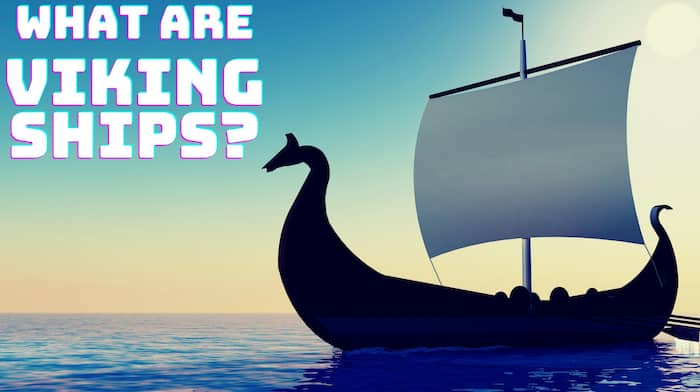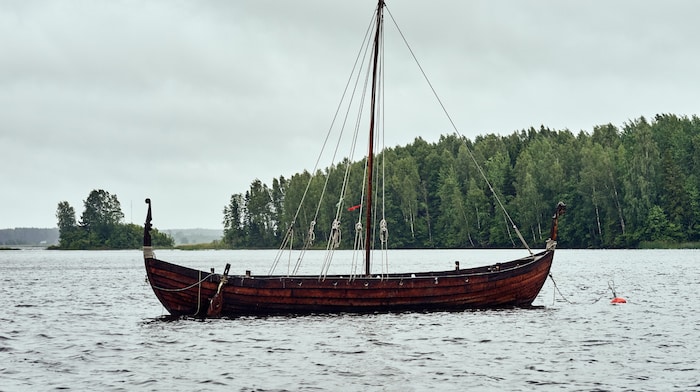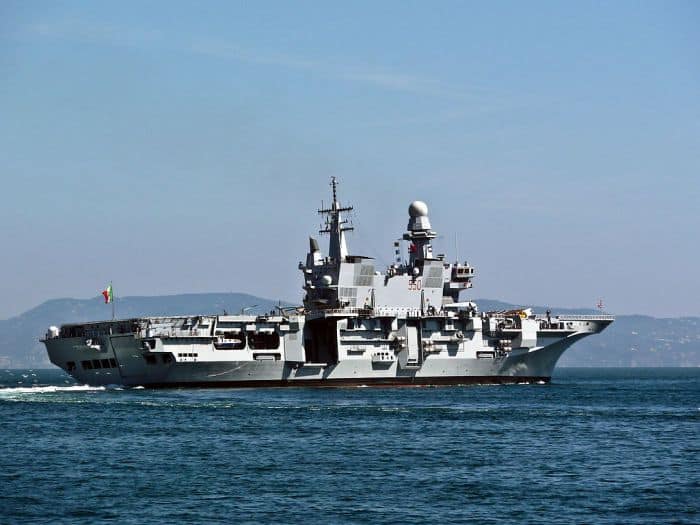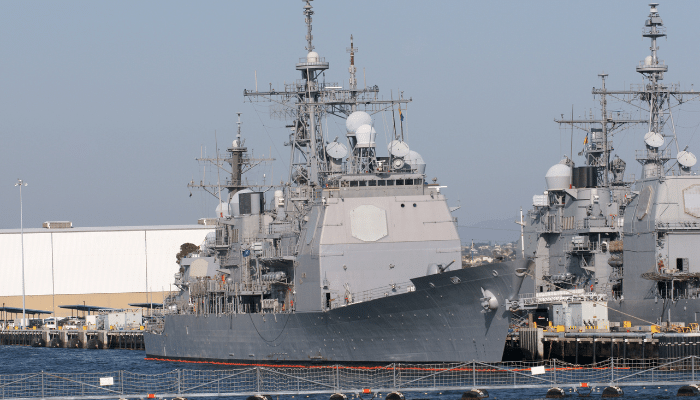What are Viking Ships?
We have heard of the Vikings and their exploits throughout history. They were said to have flourished all over the globe and founded many new settlements.
But who were they and what made them famous?
What were their ships and how did they impact the world?
In this article, learn all you ever wanted to know about the famed Viking Ships.
Who Were the Vikings?
The Vikings were a seafaring and warrior tribe that originated from Europe in the 7th century onwards. While they originally inhabited Scandinavia, they quickly conquered large parts of modern-day Europe and the West coast of North America.
They believed in the Norse system of language and religion that has been traced back to the 6th century. Later on, post the 12th century, they began converting to Christianity and eventually settled down in Nordic countries.
The Viking ships are indeed an integral part of European history and also the world’s heritage. The Vikings were an advanced warrior race of Scandinavia and they flourished in the period between the 8th and 11th centuries A.D.
Many historians have not shied away from referring to them as conquerors of the sea. This was basically because they were instrumental in discovering many new lands far and wide, which were not accessed back then, like Iceland, Russia, Greenland, Britain and even Turkey. Also, they conquered these lands, plundered them, and stamped their authority in these regions.
Today, there are officially no communities classified as “Vikings”. However, their descendants known as the Norsemen continue to live in large parts of North-Western Europe, particularly countries such as Denmark, Iceland, Greenland, Norway, and Sweden.
Vikings and the Importance of their Ships
The main and the most outstanding feature of the Vikings was their naval fleet. The medieval Viking ships were strong, durable, finely crafted and quite ahead of their times in many respects.
The sea and their vessels formed an indispensable part of the culture of the Vikings which was based on a supreme code of honour to be followed in both justice and warfare.
During the 8th to 11th century when they travelled across the world, they built their boats to be flexible yet sturdy.
To build these boats, planks were overlapped and then bound in place using rivets and wide nails. This technique is known as “clinker” planking.
When you observe pictures of Viking vessels, one thing that comes to mind is the slender and sleek curvature that is characteristic of their boats.
Even the wider trading and war boats possessed smooth hulls. Although we now know that smooth hulls of certain shapes are required to reduce hydrodynamic drag on the ship’s surface, this knowledge was not available at that time. \
For this reason, the Vikings are often credited with practical designs that stemmed from observing nature.
Categorization Of Viking Ships
If categorized broadly, the Viking ships fell into four major types,
a) The Faering- A rowboat for with 2 pairs of oars
a) The Knarr- A large vessel for transportation
b) The Karve- A relatively smaller vessel used for near coast sailing and exploration and
c) The Longships- Which were used as military battleships.
The most unique feature of the medieval Viking ships was their design, irrespective of whether the ships were for transportation, exploration or warfare.
Each vessel was characterized by a prow head or prow figure. While nearly every ship had this attached to the fore of the vessel, it was an honour bestowed upon the best classes of ships.
It was customary on all war vessels, as they believed it would strike fear into the hearts of their enemies and would bestow the Vikings with superhuman strength.
Over the years these prow figures have come to be known as the serpent head or the dragon head. But the truth is that not all Viking ships had these different heads. These were mainly designed for warships and some vessels owned by the nobles and officials.
Even then the Vikings were able to manufacture huge ships designed for transportation and cargo, some of which used 35 pairs of oars.
They had also begun using wind power with sails to propel their fast warcraft and scout vessels. In spite of the difficult mechanism and design, the Vikings were able to develop swift ships which were very quick and easy to manoeuvre.
The reason Vikings mastered shipbuilding was because of the Scandinavian terrain, which limited inland road transportation (until the development of railroads and heavy machinery following the industrial revolution).
Mountains and forests forced the Vikings to use shipping as a means of transportation and livelihood.
Over time, they mastered the art of building fast and seaworthy vessels that served multiple purposes. It formed such an important part of their culture that many Nordic coins and motifs represent the sea or a Viking vessel.
During the early and Medieval periods, Vikings ruled the seas and sailed to several new regions where they set up camps, colonies, and naval bases. Leif Eriksen is credited with landing on the Eastern coast of North America and creating a colony in what is modern Boston and Massachusetts.
Vikings believed that warriors and chieftains were to be buried with their ships, as it was the highest honour amongst them. They were decked up and buried with their possessions, much like the ancient Egyptians. There have been several excavations that have revealed chieftains buried in their ships. This tradition has been in practice amongst Nordic tribes since 400 BC.
Design and Types of Viking Ships
Viking ships served multiple purposes for the various communities within their culture. Traders and sellers preferred crafts that were sturdy and had ample storage space.
For them, speed was given lesser importance over these 2 characteristics.
On the other hand, warships were required to be fast and sturdy. They had to carry several warriors at one go and had to withstand the impacts of naval combat.
The Faering was a small boat that was manually powered by a dual pair of oars. Akin to the modern rowboat, it was also a clinker type vessel ad has been in use since the 8th century. Faering was Norse for four-oared and was mainly restricted to coastal sailing. Used for trading, fishing, and personal crafts, it was adopted by other cultures as well.
While the initial models were solely propelled by oars, later versions included a sail that could be attached if required. The main difference in the vessel between these 2 configurations was the position of the rudder.
While oars act as rudders to the side of the vessel, the stern required a stern-mounted rudder that could direct the vessel. There are a few intact Faerings that can be viewed at naval museums in Europe. It had sub-classes such as the Sunnmørsfaering and the Fembøring.
The Knarr was known for its manoeuvrability along with their loading capacity. Larger capacity cargo ships which routinely transported heavy loads were called the Busse and some others in the same category have been mentioned as Sud, Snekke, Skeide and Drakkar, all of which were large in size.
Out of these, the Drakkar were the ones which were owned by the superior ranked officials and warriors and therefore had the customary dragon designed head. Some other models of the medieval Viking ships that were a little smaller in size and used for other purposes were Skute, Byrdling and Ferje.
The Knarr was predominantly a cargo transport vessel. It was characterized by a wide and deep hull that required lesser manpower to propel. The medium-sized vessels could carry up to 25 tons and spanned over 16 meters.
The most common route for these Knarrs was the North Atlantic region where supplies were ferried to their establishments in other Norse settlements. The only Knarr ships found mostly intact are the Skuldelev 1, which is on display in Denmark, and the Askekarr, on display in Sweden.
Karves were a class of longships that were used for several different purposes. They resembled the Knarr type but also resembled a shorter version of the longship.
They had broad hulls that could ferry both large supplies and warriors across large distances. It was very sturdy and robust and could withstand the harsh weathers of the Atlantic Ocean. They were used during wars and conquests to ferry landing troops that formed the vanguard, and also to ship supplies for the frontlines.
The benefit of being very broad was that the hull draft could be suitably decreased. This allowed the Karves to land in regions where the other types of Vikings ships could not dock.
Also, they could ferry goods across the coasts of the Nordic region, that is shallow and treacherous to navigate. In general, Karves required a lot of manpower due to the size of the vessel. The beam (or width) of these vessels could span between 17 to over 20 meters. To see a Karve, the Tune ship on display in Norway is open to public viewing.
Lastly, the longships were the most common and preferred mode of sea transportation for the Vikings. In fact, most literature and graphic sources that we have on Norse culture refer to the longships. This has popularly led historians to believe that these were incredibly versatile ships that could serve multiple uses.
These were primarily used for exploration and as naval ships. It evolved into numerous types over the 7 centuries when Vikings ruled the seas. However, it is most known for being fast, with a top speed of 15 knots for the average longship.
To put that into perspective, the average ocean-going vessel today can reach speeds of 20 knots, with advanced equipment. However, powered by just oars and sails, the longship was a tried and tested naval craft.
The longship gained its speed from being shallow, curved, long, and sleek. This allowed the vessel to traverse coastlines were normal landings were not possible.
Many a nation had fallen to the Viking because of their ability to land even on the most treacherous of beaches. With its ability to carry a large number of troops during the war, the vessel was also very light. It was possible for a small contingent to be set aside to carry the ship over their shoulders.
A unique feature of these longships was that they were symmetric about the midship. They could be used in either direction, as they were mainly dependent on rowing for steerage. This double-ended design allowed them to change direction quickly without needing to physically turn the vessel around.
The sheer speed of the vessel mainly stemmed from the large groups of oarsmen that filled the length of the vessel on each side. This allowed the longships to catch up with other vessels, and it could also carry large armies across oceans.
When moving large groups of cavalry or infantry, multiple vessels were lined up and bound together. This functioned as a large platform for easy transportation of the troops and supplies. The most defining feature of these longships was their dragon prow, which signified its use as a naval vessel.
Construction Techniques, Sailing, and Navigation
It can be said that the Viking ships were strong and durable and their design allowed them to be swift as well. Considering the limited technological tools available at that time they made ships that had overlapping thick boards of wood with a single mast and parallel long oars. This is an engineering design that is hard to find among their contemporaries.
As mentioned above, this type of overlapping panel design is known as “clinker” while another name for it is “lapstrake”.
The preferred substance for the Viking ships was oak, especially the aged variety. The planks were formed using a technique called splitting, where the individual planks were cleft from the main trunk. This technique differs from directly sawing the trunk to obtain the desired shape and size.
The reason for this is because split planks retain natural fibres that provide additional strength to the vessel. As they improved construction techniques, the planks became more refined. The thinnest plank used in seagoing vessels has been found to be as less as 2.5 centimetres.
To form the basic skeleton, wooden ribs were used to provide a base for adding the planks. The planks were then riveted in an overlapping pattern. To create a rudimentary waterproofing, a layer of planks would lie above the lower layer.
This pattern would continue to the deck. Further, caulking was used to create a waterproof hull. Iron rivets were the preferred method of fastening.
The entire structure was incredibly flexible and easy to handle despite being large. There were big warships that could hold over 100 men, while the technique also worked for the smaller Faerings.
The Vikings also developed forms of navigation that enabled them to travel away from Scandinavia. This included familiarity with varied landmarks along the route, as well as the direction of tides and knowledge of currents.
A very interesting aspect of Viking navigation was the use of whales in identifying when they were near land.
Whales require high nutrition, which is found in areas where currents move inland. So, the presence of whales indicated that they were near land.
Rudimentary forms of sun-based compasses were also found near Viking archaeological sites. However, they were not able to develop more accurate navigational methods, and there are tales of how Vikings often reached new areas merely because they weren’t able to identify the direction.
Viking Ships for Public Viewing
Due to the sheer age of most Viking vessels, there are a limited number of intact ships. Since they were made of wood and held in place by metallic rivets, it was eaten into and corroded over time.

The intact vessels that are available for public viewing today are mainly in museums around Denmark, Sweden, and Norway.
The famous ones are:
1. Gokstad, spanning 23.3 meters in length
2. Oseberg, spanning 21.5 meters in length
3. Skuldelev vessels, which were 5 ships that were located together in Denmark
4. Tune, spanning 18.7 meters in length
5. Gjellestad site, where an ongoing exploration is underway as of 2020. The ship is believed to measure over 20 meters in length
There are numerous replicas of Viking ships around the world due to their cultural impact. These are housed across North America and Europe.
The primary and most successful company that builds these replicas is the Viking Ship Museum that is located in Denmark. Another company is the Rødsverven shipyard in Norway.
You may also like to read:
- What Is A Floating Storage Regasification Unit (FSRU)?
- Windjammer Sailing Ships: From Past to Present
- How Vikings Used “Sunstones” for Navigation at Sea?
Disclaimer: The authors’ views expressed in this article do not necessarily reflect the views of Marine Insight. Data and charts, if used, in the article have been sourced from available information and have not been authenticated by any statutory authority. The author and Marine Insight do not claim it to be accurate nor accept any responsibility for the same. The views constitute only the opinions and do not constitute any guidelines or recommendation on any course of action to be followed by the reader.
The article or images cannot be reproduced, copied, shared or used in any form without the permission of the author and Marine Insight.
Do you have info to share with us ? Suggest a correction
Latest Type Of Ships Articles You Would Like:
Subscribe To Our Newsletters
By subscribing, you agree to our Privacy Policy and may receive occasional deal communications; you can unsubscribe anytime.




















Hi, the article says: “Back then the technology of sails had not yet been discovered by man and therefore these ships were propelled by oars”.
Yet there is in the article a fanciful picture of a saga viking ship with, lo and behold, a sail! Think you need some editing there. Fact is vikings did sail as well as using oars and their sail technology was very advanced as well as their ship design and navigational equipment which actually included carrying ravens onboard in order to find safe landings 🙂